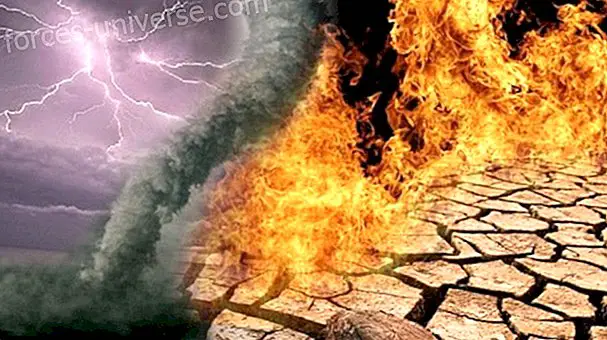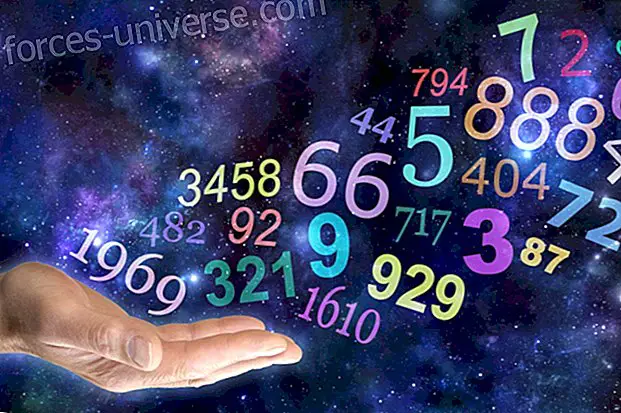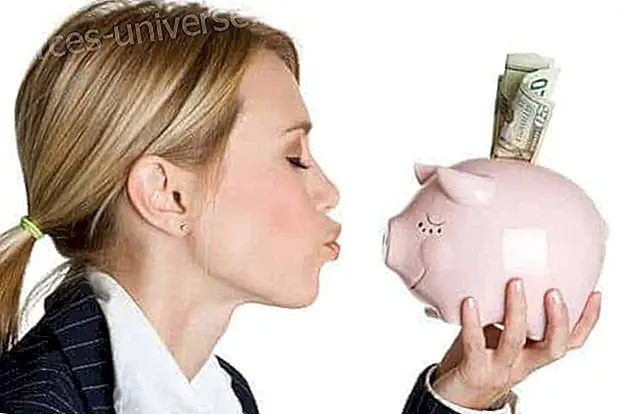
1. BRAHMA. It is the first part of the Triad, it is the Father God Creator. Dropping an egg in cosmic waters, Brahma creates all beings. He is also the high priest with four heads in each of the directions of the cardinal points representing the four Vedas. Brahma's wife is Savitri.

2. VISHNU is the conservative God, the forces embody the protection of the world. It is the God son. It is part of the triad and is one of the three forms of God. When a soul becomes incarnate it needs Vishnu's help to descend to Earth. So far it has manifested itself in 9 different ways: Matsya, Kurma (turtle), Varah (wild boar), Narasimha (lion-man), Vamana (dwarf), Parashurama, Rama, Krishna and Buddha. The tenth, Kalki, will appear with a sword of fire to save human beings from darkness. Vishnu has dark blue skin, walks on top of an eagle called Garuna (attributed to him by the symbolism of Nibirú or planet X) and sits on top of the Shesha snake. Its symbols are the shell, the disk and the lotus. Lakshmi is his wife and Kama, the god of love, his son.

3. SHIVA. Also known as Lord Mahesh, He is the destroyer of the Triad or the Holy Spirit. Developed from Rudra, the Vedic god of death, Shiva can often be seen sitting in a tiger skin and riding the Nandi bull. It is also associated with a lingam (phallus). It has three eyes, of which the third (located in the center of its head), which knows everything, when it opens it destroys the world that is later regenerated. Lord of all underworld beings, he wears a necklace of skulls and another of a snake. He carries a trident as a weapon and has a blue throat, the result of drinking poison. Parvati, is one of his several consorts. He has two children: Kartikeya (the god of war) and Ganesha.

4. Krishna. This eighth avatar of Vishnu was born when he ripped two of his own hair one light and the other dark to fertilize Devaki. Krishna can be described as a child, teenager or adult. As a child you must protect yourself from your enemies who want to kill him. In this period, he plays and makes jokes. As a teenager she plays as a young lover, plays the flute and dances with the maidens. As an adult, he is a dark-skinned warrior with a light, angelic face, accompanied by Arjuna (in the Mahabharata). In the Bhagavad-Gita it is he who reveals the importance of dharma and karma. His consort is Radha. It is said to have been one of the greatest avatars of India. It has been compared with a lion and with Christ, thus Krishna symbolizes the supreme God who allows to rise to a state of higher consciousness.

5. GANESHA. This elephant-headed god embodies wisdom and knowledge and is often depicted riding a rat. Parvati "gives birth" to Ganesha after scrubbing herself with saffron paste after bathing. Ganesha has two wives (Riddhi, Siddhi), two sons and a daughter. People recognize in this deity powers to remove obstacles and make them bearer of good luck before starting their activities. It would embody the forces of Love-Wisdom of this universe.

6. RAMA .. Vishnu's seventh avatar is the hero of Ramayana. Born as a prince, son of King Dasharatha and Queen Kaushalya, Rama wins the hand of his wife Sita in a contest held by Sita's father, King Janaka. Rama was the ideal son, all families need ideal children. Moreover, he was an ideal brother, he was the example of harmony between the brothers. Rama is an example of brotherly love for the whole family. He was also an ideal husband. A word, an arrow, a wife, that was Rama's rule. It symbolizes the man who operates with all his senses and who acts accordingly.

7. INDRA. Goddess of rain, thunder, and war. Many Vedic hymns have been dedicated to her. With the help of other gods like Marut, he leads the Aryan conquest of India. The dragon Vritra, who had stolen the water of the world, also conquers. Some find a parallel between Indra and the Marduck God of the Annunakis.

8. LAKSHMI (or Sri). Lakshmi is the goddess of prosperity and the patron of money. Born from the inertia of the oceans. Symbol of feminine beauty, which looks like a lotus flower. It also represents virtue and honesty.

9. PARVATI or wife of Shiva. Embodies the mother goddess. Its most benevolent form is the reincarnation of sati, which was thrown into the fire. But take other forms such as: Durga or Kali. It symbolizes the woman completely in love with her husband, since she had to reincarnate several times to live with her love Shiva.

10. ARJUNA. He is the main hero of the Mahabharata. Son of Indra, and one of the five Pandavas brothers (like Krishna), who fights a bitter war against his cousins the Kurus. Arjuna feels remorse in the fight against his cousins. But Krishna responds to Arjuna that he must follow his devotion and inner strength to do what he must do and not what he wishes to do. Arjuna is the symbol of the disciple, of the one who enters the process of initiation.

11. HANUMAN. Son of the wind god and Queen Vaayu Anjana, Hanuman has a human body with the monkey head. As a child, the sun swallows it (he confused it with a piece of fruit), and Goddess Indra punished him with lightning. He occupies a prominent place in the Ramayana. It symbolizes selfless service, since it lacks ego and is a Rama server.

12. AGNI. It is part of the trinity along with Surya (the sun) and Vaayu (the wind). Agni is responsible for the fires, for the sacrifices, is the patron of the priests and embodies the force that develops as the inner fire of highly evolved beings. It has a red body, three legs, four arms, and seven tongues., which often leads to a javelin flame. In the Mahabharata, Agni is the grandfather of one of the seven great sages, with the help of Krishna, who devours the Khandav forest.
2. VISHNU is the conservative God, the forces embody the protection of the world. It is the God son. It is part of the triad and is one of the three forms of God. When a soul becomes incarnate it needs Vishnu's help to descend to Earth. So far it has manifested itself in 9 different ways: Matsya, Kurma (turtle), Varah (wild boar), Narasimha (lion-man), Vamana (dwarf), Parashurama, Rama, Krishna and Buddha. The tenth, Kalki, will appear with a sword of fire to save human beings from darkness. Vishnu has dark blue skin, walks on top of an eagle called Garuna (attributed to him by the symbolism of Nibirú or planet X) and sits on top of the Shesha snake. Its symbols are the shell, the disk and the lotus. Lakshmi is his wife and Kama, the god of love, his son.
3. SHIVA. Also known as Lord Mahesh, He is the destroyer of the Triad or the Holy Spirit. Developed from Rudra, the Vedic god of death, Shiva can often be seen sitting in a tiger skin and riding the Nandi bull. It is also associated with a lingam (phallus). It has three eyes, of which the third (located in the center of its head), which knows everything, when it opens it destroys the world that is later regenerated. Lord of all underworld beings, he wears a necklace of skulls and another of a snake. He carries a trident as a weapon and has a blue throat, the result of drinking poison. Parvati, is one of his several consorts. He has two children: Kartikeya (the god of war) and Ganesha.
4. Krishna. This eighth avatar of Vishnu was born when he ripped two of his own hair one light and the other dark to fertilize Devaki. Krishna can be described as a child, teenager or adult. As a child you must protect yourself from your enemies who want to kill him. In this period, he plays and makes jokes. As a teenager she plays as a young lover, plays the flute and dances with the maidens. As an adult, he is a dark-skinned warrior with a light, angelic face, accompanied by Arjuna (in the Mahabharata). In the Bhagavad-Gita it is he who reveals the importance of dharma and karma. His consort is Radha. It is said to have been one of the greatest avatars of India. It has been compared with a lion and with Christ, thus Krishna symbolizes the supreme God that allows one to rise to a higher state of consciousness.
5. GANESHA. This elephant-headed god embodies wisdom and knowledge and is often depicted riding a rat. Parvati "gives birth" to Ganesha after scrubbing herself with saffron paste after bathing. Ganesha has two wives (Riddhi, Siddhi), two sons and a daughter. People recognize in this deity powers to remove obstacles and make them bearer of good luck before starting their activities. It would embody the forces of Love-Wisdom of this universe.
6. RAMA .. Vishnu's seventh avatar is the hero of Ramayana. Born as a prince, son of King Dasharatha and Queen Kaushalya, Rama wins the hand of his wife Sita in a contest held by Sita's father, King Janaka. Rama was the ideal son, all families need ideal children. Moreover, he was an ideal brother, he was the example of harmony between the brothers. Rama is an example of brotherly love for the whole family. He was also an ideal husband. A word, an arrow, a wife, that was Rama's rule. It symbolizes the man who operates with all his senses and who acts accordingly.
7. INDRA. Goddess of rain, thunder, and war. Many Vedic hymns have been dedicated to her. With the help of other gods like Marut, he leads the Aryan conquest of India. The dragon Vritra, who had stolen the water of the world, also conquers. Some find a parallel between Indra and the Marduck God of the Annunakis.
8. LAKSHMI (or Sri). Lakshmi is the goddess of prosperity and the patron of money. Born from the inertia of the oceans. Symbol of female beauty, which looks like a lotus flower. It also represents virtue and honesty.
9. PARVATI or wife of Shiva. Embodies the mother goddess. Its most benevolent form is the reincarnation of sati, which was thrown into the fire. But take other forms such as: Durga or Kali. It symbolizes the woman completely in love with her husband, since she had to reincarnate several times to live with her love Shiva.
10. ARJUNA . He is the main hero of the Mahabharata. Son of Indra, and one of the five Pandavas brothers (like Krishna), who fights a bitter war against his cousins the Kurus. Arjuna feels remorse in the fight against his cousins. But Krishna responds to Arjuna that he must follow his devotion and inner strength to do what he must do and not what he wishes to do. Arjuna is the symbol of the disciple, of the one who enters the process of initiation.
11. HANUMAN . Son of the wind god and Queen Vaayu Anjana, Hanuman has a human body with the monkey head. As a child, the sun swallows it (he confused it with a piece of fruit), and Goddess Indra punished him with lightning. He occupies a prominent place in the Ramayana. It symbolizes selfless service, since it lacks ego and is a Rama server.
12. AGNI . It is part of the trinity along with Surya (the sun) and Vaayu (the wind). Agni is responsible for the fires, for the sacrifices, is the patron of the priests and embodies the force that develops as the inner fire of highly evolved beings. It has a red body, three legs, four arms, and seven tongues., which often leads to a javelin flame. In the Mahabharata, Agni is the grandfather of one of the seven great sages, with the help of Krishna, who devours the Khandav forest.
The simplified Gita PPS






